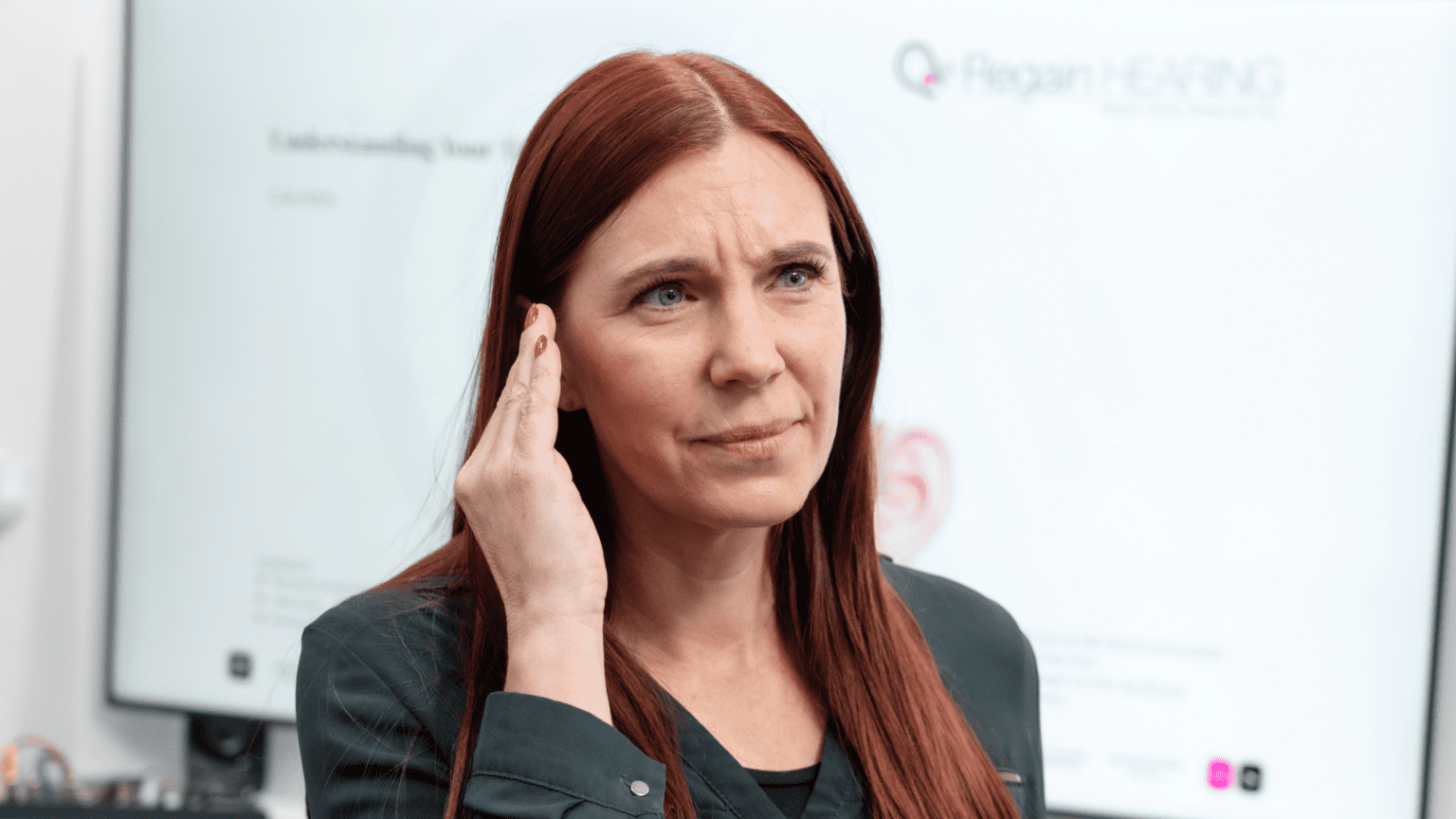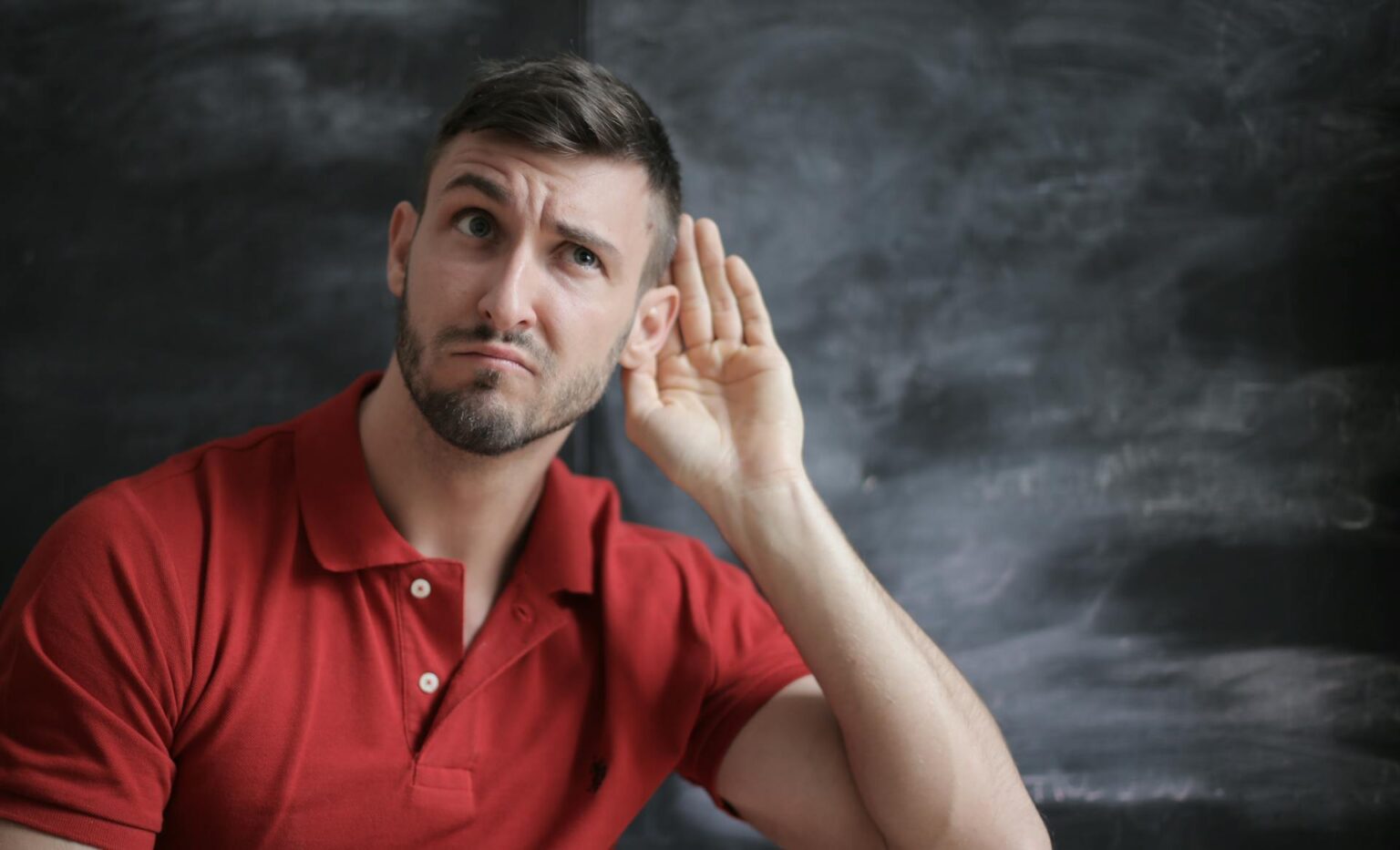Request a hearing test appointment today
The World Health Organisation (WHO) recently shared some alarming news. It is thought that 1.1 billion young people are at risk of potentially life-altering hearing loss due to loud noise exposure. Wearing headphones can cause hearing loss, but it’s not the headphones themselves that are the problem. It’s the volume of the audio that the user is listening to that can lead to hearing damage.
WHO defines this noise-induced hearing loss as being caused by either:
- Sustained exposure to moderately loud noise — 85 decibels for eight hours.
- Short-term exposure to very loud noise — 15 minutes listening to sound above 100 decibels.
But why are young people at such high risk of noise-induced hearing loss? While WHO outlines risk factors such as bars, clubs and music venues as causing hearing damage, the biggest problem faced is through listening to loud music using headphones on a smart device.
Key Takeaways
- Volume Over Time: Hearing loss from headphones is due to high volume levels. Sustained exposure to moderately loud noise (85 decibels for eight hours) or short-term exposure to very loud noise (above 100 decibels) can cause damage.
- Youth at Risk: Young people, especially those under 35, are at high risk due to frequent use of mobile devices at high volumes.
- Permanent Damage: Damage to the tiny hairs in the inner ear from loud music is often irreversible, leading to permanent hearing loss.
- Prevention Tips: To prevent hearing loss, keep volume levels at 60% of maximum, use noise-cancelling headphones, and follow the 60/60 rule (60% volume for 60 minutes).
Headphones and Hearing Loss – are headphones ‘bad’ for your ears?
Data shows that those under 35s are more likely to listen to music using mobile devices than other age demographics. Of those, WHO suggests 50% are listening to music while wearing headphones that are too loud.
Many young people are blasting out their music at maximum volume. Figures show they do this at a much higher rate than older individuals. Loud music through headphones can damage the inner ear and cause hearing loss.
On an Apple iPhone, the maximum volume while wearing headphones is equal to 102 decibels. This means that hearing damage can occur after listening to just a few songs at this range. Even at lower ranges, it’s easy to be within unsafe levels.
WHO is not alone in their concerns. A study in 2010 by Harvard Medical School in the US found that the rise in popularity of headphones has significantly increased the rate of hearing loss diagnosis in individuals under the age of 20. There is no doubt that the improper use of headphone or earphone technology causes lifelong hearing problems for people.
How Do Headphones Cause Hearing Loss?
If you think about the human ear, it makes sense that it is not suited for loud noises. The ear has developed to detect even very low-level sounds. Why? It’s a natural survival tool. Just look at prey animals like rabbits or deer.
Their hearing is absolutely exceptional as it helps them avoid predators. Your ear has evolved in much the same way. It might not be as sensitive as a rabbit’s, but it isn’t just there to help you communicate — it’s there to help you avoid danger. In the natural world, you’ll rarely come across very loud noises, but instead quiet and subtle ones.
This means the human ear has not evolved to manage loud noise but is built to pick up on gentle sounds. Thus, when we introduce artificially loud sound through headphones or earbuds, we can end up damaging our ears.
But how?
Your ear is a very complicated system, but in simple terms, sound is created as a sensory reaction in your brain following the vibration of tiny hairs within a chamber in your inner ear. Friction between different surfaces results in movement in the air, and this movement causes these hairs to vibrate in different ways, creating different sounds.
Loud music increases the strength of these vibrations. If the vibrations are too intense for too long, the hairs are unable to cope with the load and stop working properly. Depending on how long you listened to music for, and how loud the music was, two things can happen:
- The hairs can be damaged and may have lost sensitivity, but they can recover over time. This is why you may find it hard to hear after leaving a noisy place but eventually, your hearing returns to normal. The hairs are overloaded but they’ll heal in time.
- If too much damage is done, the hairs are beyond repair. They’ve lost their ability to vibrate with sound and have become useless. This is when we experience noise-induced hearing loss. The damage to your hearing has become permanent.
I think I Listen to Music Too Loud: How Can I Reverse Hearing Loss from Headphones?
Sadly, there is no way to reverse damage caused to the inner ear. Once the hairs in your inner ear are destroyed to the point they cannot repair themselves, they are lost for the rest of your life. We cannot currently restore damaged cells in the ear canal. You can treat hearing loss and improve your ability to hear, but you cannot cure headphones hearing loss.
How to Treat Hearing Loss from Headphone Use
The best method of hearing loss treatment is prevention. Headphone hearing loss is a totally preventable condition and later on in this blog, we’ll advise you on how to take steps to limit exposure without ruining your music enjoyment. However, if you’re concerned that yourself, a friend, or a loved one has already damaged their hearing through listening to music, there are treatments available.
For severe hearing loss, the best course of treatment is hearing aids. Hearing aids work very differently depending on what kind of hearing aid you acquire, which will be a decision you make with an audiologist. However, they all do the same thing — they enhance what remains of your natural ability to hear, allowing a much wider range of hearing. Many people who suffer from hearing loss as a result of headphone use can achieve normal levels of hearing through a hearing aid.
Other treatments exist for milder cases of hearing loss, including sound therapy, but hearing aids are the most effective way to manage damage to your hearing and return to normal life.
How to Tell if You Have Hearing Loss from Headphones
You may have symptoms of hearing loss, or you may notice people close to you are exhibiting warning signs. Common signs of hearing loss include tinnitus, a persistent ringing in one or both ears, regularly asking people to repeat what they’d just said, and mishearing things. If you’re experiencing these symptoms — or have more obvious signs of hearing loss, such as clear difficulty hearing or partial deafness — then the best way to confirm your suspicions is through a hearing test.
When you book a hearing test in London with an audiologist clinic like ours, we’ll run through a series of comprehensive tests to measure your ability to hear. Our range of tests ensures we can give you a complete understanding of your inner-ear health and advise you on the best course of action.
Prolonged exposure to loud volumes through headphones can lead to irreversible hearing loss. The tiny hair cells in the inner ear are extremely sensitive and once damaged, they do not regenerate. This makes it crucial to maintain safe listening levels to protect your hearing health,” says Lee Fletcher Company Director, Principal Audiologist at Regain Hearing.
How to Prevent Hearing Loss When Listening to Music Through Headphones
It’s easy to take steps to prevent hearing damage through headphone use. If you don’t want to damage your hearing permanently, all you have to do is use the wealth of information we have available to make smart choices and protect your ears. Awareness is a powerful thing. If you’re always thinking about safe ways to enjoy music, then you’re going to keep away from harmful practices. With that in mind, what measures can you put in place to better protect your hearing from noise-induced hearing loss caused by headphones?
1. Turn the Volume Down
It really is that easy. Noise of 80 decibels can be listened to for over 25 hours straight without risk of hearing damage. On an iPhone, that’s around 60% of maximum volume. At 60% volume, you can still very clearly hear your music, and with good quality headphones, you’ll be able to vibe along to every beat. Keeping the volume controlled is the easiest way to avoid any problems with hearing loss that relates to headphones.
2. Set Controls on Phones
Most phones have settings that allow you to set a maximum volume so you don’t accidentally exceed a safe limit. Navigate to the settings menu to search for this feature, or look it up online if you can’t find it. This is a great way for parents to manage the way their child is listening to music in particular.
3. Don’t Turn the Volume Up in Loud Environments
Let’s say you’re commuting and it gets noisy, or you’re on a loud aircraft and the engine whir is messing with your sound. The temptation is to turn the volume up. Louder music helps both drown out the noise and makes it easier to hear. Background noise can really get in the way of a song. But the background noise is not making your music quieter, which means raising the volume is raising the decibel levels your ears are experiencing, and risking hearing damage. For the purposes of cutting out background noise, instead of raising the volume, try to wear noise-cancelling headphones.
4. Limit Noise Exposure
If you love to listen to music on a higher volume, then make sure you don’t do it very often. The duration of sound exposure is key. You can listen to music at 102 decibels — the same range as a drill or the average max volume on a smartphone — for around ten minutes before it becomes dangerous. Set yourself a time limit and stick to it. It’s advised you stop well before the time limit to protect your hearing. If you really have to blast a song at full volume, make sure it’s just one song, and give your ears a chance to recover after.
5. Use Over-The-Ear Headphones
Over-the-ear headphones, as compared to inner-ear earbuds, are gentler on the ears as the sound is applied in a less direct way to the eardrum. You can still very easily harm your hearing with loud music played through over-the-ear headphones, so don’t get carried away. But in general, they are safer as they provide a smoother and more even distribution of sound.
6. Follow the 60/60 Rules
At Regain Hearing, we’re advocates of the 60/60 rule to prevent hearing loss from headphone use. It’s very easy to follow but can really limit any damage to your hearing. It involves both limited exposure to sound and lower volumes of music listened to through headphones. The idea is 60% music player volume for 60 minutes. A moderate volume range for a limited time with breaks afterwards drastically lowers any chance of damage. And, if any did occur, your body has time to heal itself. It’s a fantastic rule to follow and to teach others if you’re worried about their exposure to noise.
FAQs
Can you go deaf from wearing headphones?
Yes, prolonged exposure to loud volumes through headphones can lead to permanent hearing loss. The tiny hair cells in the inner ear can be damaged by excessive noise levels, and once these cells are damaged, they cannot regenerate. This can result in partial or complete deafness over time, especially if safe listening practices are not followed.
Can you reverse hearing loss from headphones?
No, hearing loss caused by headphone use is typically permanent. Once the hair cells in the inner ear are damaged beyond repair, they cannot be restored. While hearing aids and other treatments can help manage and improve hearing ability, they do not cure or reverse the damage.
Can earphones cause tinnitus?
Yes, earphones can cause tinnitus, which is a constant ringing or buzzing in the ears. Listening to music at high volumes for extended periods can damage the hair cells in the inner ear, leading to tinnitus. This condition can be temporary or permanent, depending on the extent of the damage.
Related reading: Read more about loud noise-induced Tinnitus here.
Side effects of headphones on the brain?
While there is no direct evidence linking headphone use to brain damage, high volumes can indirectly affect cognitive functions. Hearing loss and tinnitus resulting from loud headphone use can lead to issues such as concentration problems, stress, and reduced cognitive performance. Maintaining safe listening practices is crucial to avoid these potential side effects.
Hearing loss can be upsetting and difficult to deal with, but it really is treatable. Our specialist private ear clinic — available in Kent, Essex and London — has helped hundreds of people find relief for debilitating hearing loss. If we can help them, we can help you, too! Get in touch today to arrange an appointment.

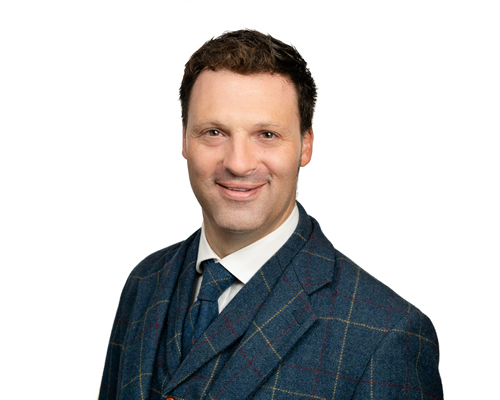

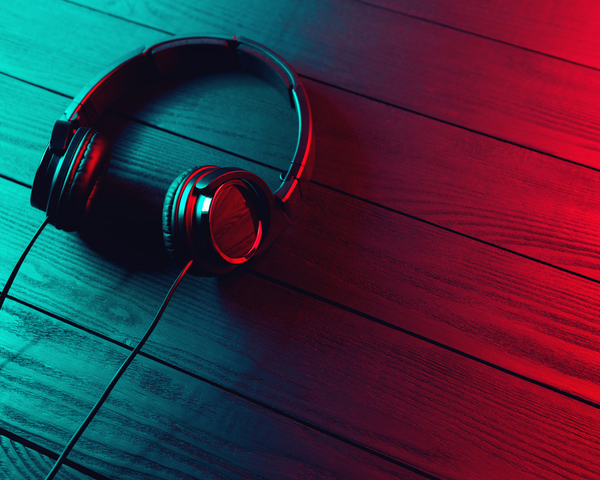
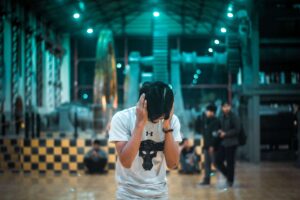
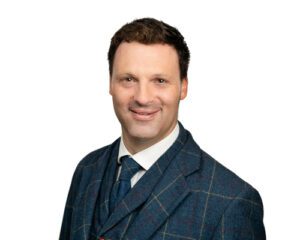 Prolonged exposure to loud volumes through headphones can lead to irreversible hearing loss. The tiny hair cells in the inner ear are extremely sensitive and once damaged, they do not regenerate. This makes it crucial to maintain safe listening levels to protect your hearing health,” says
Prolonged exposure to loud volumes through headphones can lead to irreversible hearing loss. The tiny hair cells in the inner ear are extremely sensitive and once damaged, they do not regenerate. This makes it crucial to maintain safe listening levels to protect your hearing health,” says
